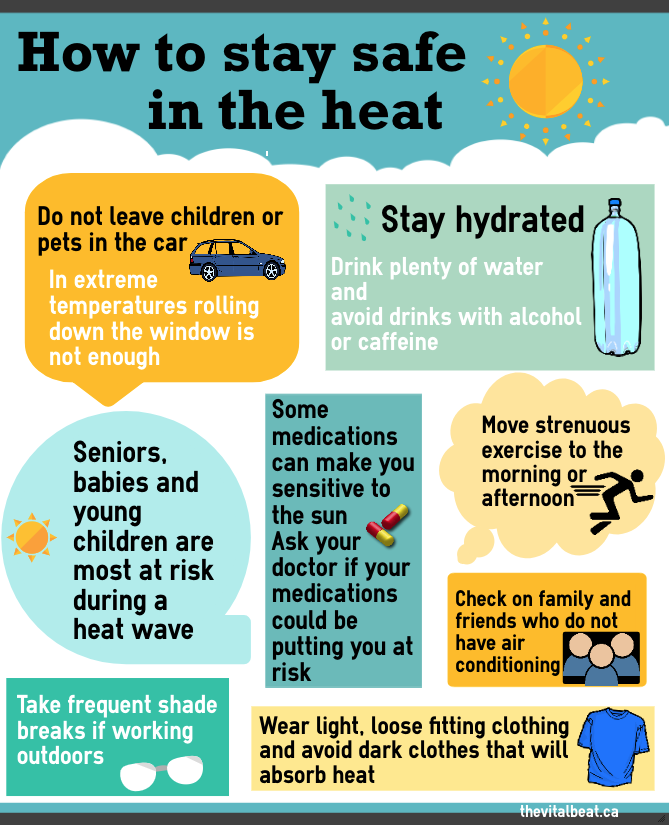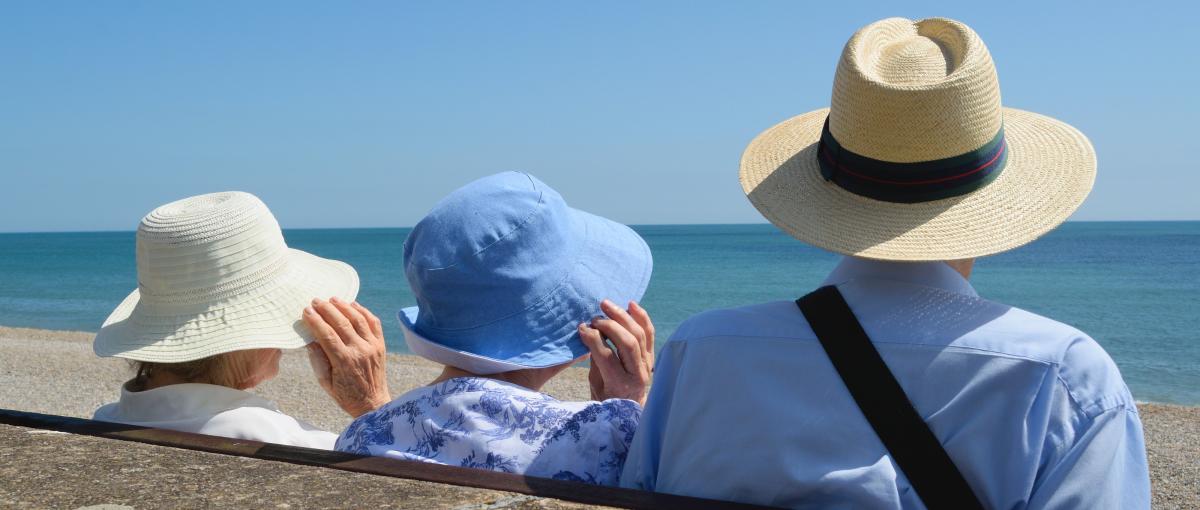Summer is the season to enjoy sunshine and rising temperatures. But we need to remember that hot weather can be dangerous, particularly for those over 65.
As it gets hotter, seniors become more susceptible to heatstroke. “Your body can’t cool itself down and your core temperature becomes elevated,” says Darla Reynolds, Emergency Program Manager at the Grey Nuns Community Hospital. “Seniors are unable to regulate their temperature as well as younger people.”
According to the Government of Canada, symptoms of heatstroke include dizziness, nausea, rapid breathing and heartbeat, and headaches.
There are steps you can take to minimize the risk of heatstroke.

Keep hydrated
Seniors drink less water than the average adult, according to Andrea Michael, Clinical Nurse Educator. “Getting out of the sun, of course, is important,” says Andrea. “But if you are not hydrated, even if you are indoors, it can be quite a problem.”
Try to aim for eight glasses of water per day.
Know your medication side-effects
Some medications make seniors more susceptible to heatstroke. Medications like beta blockers for high blood pressure interfere with the body’s ability to regulate its temperature.
Dress appropriately
Andrea recommends wearing light and loose-fitting clothing. Long-sleeved shirts are OK because they help protect skin from the sun. Avoid wearing heavy jackets or pants.
Look for cool spaces
When outside, look for shade or take shelter under an umbrella. Ensure that your car’s air conditioning is working before leaving your home. If your house doesn’t have air conditioning, consider going to the mall, movie theatre or library.
Avoid being outside during midday
Plan your outdoor activities around the hottest times of the day, advises Wendy Campbell, Recreational Therapist. Try to avoid working or spending much time in the sun from 10 a.m. to 4 p.m. “That’s when the temperature is at its hottest,” says Wendy.
Use sunscreen
Seniors' skin is fragile and more susceptible to burns. Make sure to apply sunscreen that protects against UVA and UVB rays and has a sun protection factor (SPF) of 30. “Put it on before stepping outside and reapply if you’re outside for a long period of time,” says Wendy. It is also beneficial to wear wide-brimmed hats and sunglasses.
